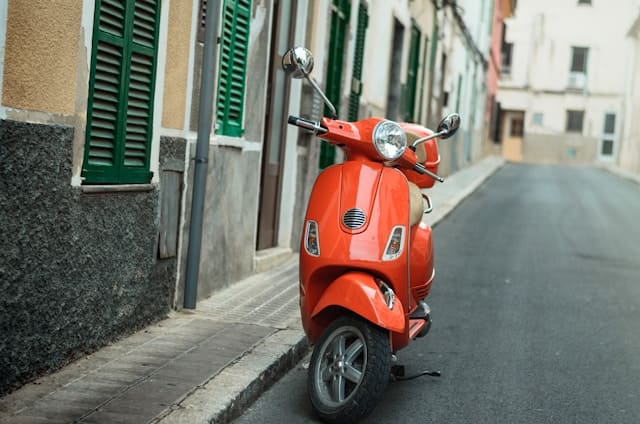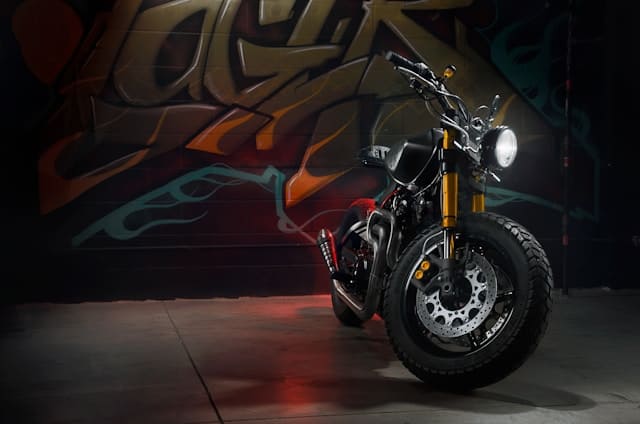
Buying a new scooter can be an exciting yet daunting task, given the myriad options available in today’s market. Whether you’re looking to navigate bustling city streets with ease, embark on weekend adventures, or simply find a reliable means of daily transport, selecting the right scooter requires careful consideration of numerous factors. Similar to buying bikes, each scooter comes with its own set of features, capabilities, and potential trade-offs, making it essential to identify what aligns best with your needs and lifestyle.
In this comprehensive guide, we will delve into the 15 key factors to consider before buying a new scooter. From budget planning and understanding your usage requirements to evaluating engine capacity, fuel efficiency, and safety features, we will cover all the essential aspects that should influence your decision-making process. Additionally, we will explore considerations such as brand reputation, after-sales service, insurance costs, and environmental impact, ensuring you are fully equipped with the knowledge needed to make an informed and satisfying purchase.
By the end of this guide, you’ll have a clear understanding of what to look for in a scooter, allowing you to make a choice that not only meets your practical needs but also enhances your riding experience. So, let’s embark on this journey together and uncover the critical factors that will help you find the perfect scooter for your needs.
Let’s Dive into the 15 Must-Know Tips for Buying a New Scooter:
1. Budget:
Determine your budget, considering both the upfront cost of the scooter and additional expenses such as insurance, registration, accessories, and maintenance. Factor in potential financing options and interest rates if you plan to take a loan. Having a clear budget help narrow down choices and ensures financial preparedness for ownership costs over the scooter’s lifespan.
Example: If your budget is 1,000 bucks, consider scooters priced between 7,000 to 8,000 bucks to leave room for additional costs.
Caution: Avoid stretching your budget too thin, as it may lead to financial strain or limit your ability to afford necessary accessories and maintenance.
2. Usage:
Analyze your primary use cases for the scooter. Will it be for daily commuting in urban areas, weekend leisure rides, or long-distance travel? The intended usage will influence the type of scooter you should choose. For instance, frequent city commuting may require a lightweight, fuel-efficient model, whereas longer rides might need a more powerful engine and comfortable seating.
Example: For daily commuting in a city, a lightweight and fuel-efficient scooter like the Honda Activa might be suitable.
Caution: Choosing a scooter not designed for your primary usage can lead to dissatisfaction and higher operational costs.
3. Engine Capacity:
Choose the engine capacity based on your riding needs and local regulations. Scooters generally range from 50cc to 400cc. Smaller engines (50-125cc) are ideal for short trips and urban commuting due to their fuel efficiency and ease of handling. Larger engines (150cc and above) offer better performance, higher speed, and suitability for longer journeys and hilly terrains.
Example: A 125cc scooter like the Yamaha Ray ZR is ideal for urban commuting.
Caution: An engine capacity that’s too high for your needs can result in unnecessary fuel consumption and higher insurance costs.
4. Fuel Efficiency:
Evaluate the scooter’s fuel efficiency to gauge its operational cost. High fuel efficiency means lower expenditure on fuel, making it more economical for daily use. Consider the scooter’s miles per gallon (MPG) or Kilometers per Liter (KMPL) ratings provided by the manufacturer and check real-world user reviews for practical insights.
Example: The Suzuki Access 125 offers excellent fuel efficiency, making it cost-effective for daily commutes.
Caution: Neglecting fuel efficiency can lead to higher operational costs over time, especially if you have a long daily commute.
5. Comfort and Ergonomics:
Comfort and ergonomics are crucial for an enjoyable riding experience. Pay attention to the seat height, cushioning, handlebar position, and footrest placement. Ensure the scooter provides a comfortable seating position that suits your body type and minimizes fatigue during longer rides. Ergonomically designed scooters reduce strain on your back and wrists.
Example: The models of Honda Activa are known for its comfortable seating and ergonomic design.
Caution: Discomfort from poor ergonomics can lead to fatigue and reduce your enjoyment of riding.
6. Storage Space:
Assess the scooter’s storage capacity. Look for under-seat storage, glove compartments, and additional hooks or carriers. Sufficient storage space is essential for carrying personal items, groceries, or commuting essentials. Evaluate the ease of accessing storage areas and the overall practicality of the scooter for your daily needs.
Example: The TVS Jupiter offers spacious under-seat storage and additional hooks for bags.
Caution: Insufficient storage space can be inconvenient for daily use, especially if you often carry items.
7. Build Quality and Durability:
Examine the build quality and durability of the scooter. Check the materials used for the frame, body panels, and components. High-quality materials and robust construction enhance the scooter’s longevity and resistance to wear and tear. Durable scooters require less frequent repairs and offer better long-term value.
Example: Vespa scooters are renowned for their solid build quality and classic design.
Caution: Poor build quality can lead to frequent repairs and a shorter lifespan for the scooter.
8. Safety Features:
Safety features are paramount. Look for scooters equipped with advanced braking systems like ABS (Anti-lock Braking System) or CBS (Combined Braking System), which enhance control and prevent wheel lock during sudden braking. Ensure the scooter has good lighting (headlights, taillights, and indicators) for visibility, especially during night rides or adverse weather conditions.
Example: The Honda Grazia offers CBS for improved braking safety.
Caution: Skipping on essential safety features can increase the risk of accidents and injuries.
9. Brand Reputation and Reliability:
Research the brand’s reputation and the specific model’s reliability. Opt for established brands known for quality, customer service, and availability of spare parts. Reliable scooters from reputable brands are less likely to experience frequent breakdowns and typically have better resale value. Customer reviews and expert opinions can provide valuable insights into the scooter’s performance and reliability.
Example: Honda and Yamaha are known for their reliable scooters and strong after-sales support.
Caution: Choosing an unreliable brand can lead to frequent breakdowns and difficulty in sourcing spare parts.
10. After-Sales Service and Warranty:
Consider the after-sales service and warranty offered by the manufacturer. A comprehensive warranty covering the engine, electrical components, and frame is essential for peace of mind. Evaluate the availability and accessibility of service centers, the cost of maintenance, and the quality of customer support. Good after-sales service ensures timely repairs and maintenance, extending the scooter’s lifespan.
Example: Yamaha offers a robust warranty and extensive service network.
Caution: Limited warranty coverage and poor after-sales service can result in higher repair costs and inconvenience.
11. Resale Value:
Think about the scooter’s potential resale value. Some brands and models hold their value better over time, making them a better investment. Factors influencing resale value include brand reputation, model popularity, maintenance history, and overall condition. A scooter with a higher resale value can be more financially beneficial if you plan to upgrade or sell it in the future.
Example: Vespa scooters generally have a high resale value due to their timeless appeal.
Caution: Scooters with poor resale value can lead to significant financial loss when you decide to sell or trade them in.
12. Insurance Costs:
Factor in the insurance costs associated with the scooter. Insurance premiums vary based on the scooter’s engine capacity, make, model, and your personal driving history. Higher engine capacities and premium models typically attract higher insurance premiums. Compare insurance quotes from different providers to find the best coverage at an affordable rate.
Example: Smaller engine scooters typically have lower insurance premiums.
Caution: High insurance costs can significantly add to the total cost of ownership.
13. Environmental Impact:
Consider the scooter’s environmental impact, including emissions and fuel type. Electric scooters are an eco-friendly option with zero emissions and lower running costs. Traditional petrol scooters vary in their emission levels. Opting for a scooter with lower emissions contributes to environmental conservation and may qualify for tax incentives or rebates in some regions.
Example: The Ather 450X is an electric scooter with zero emissions and low running costs.
Caution: Higher emissions from petrol scooters can contribute to environmental pollution and incur additional taxes in some regions.
14. Technology and Features:
Evaluate the technological features and enhancements offered by the scooter. Modern scooters may include digital displays, Bluetooth connectivity, GPS navigation, and smart key systems. These features add convenience, improve the riding experience, and can enhance safety. Consider how these technological advancements align with your needs and preferences.
Example: The TVS NTorq 125 comes with a smart connect feature that integrates with your smartphone.
Caution: Overlooking technological features may result in missing out on conveniences that could enhance your riding experience.
15. Test Ride:
Always take a test ride before finalizing your purchase. A test ride allows you to assess the scooter’s performance, handling, comfort, and ergonomics. Pay attention to acceleration, braking, suspension, and overall ride quality. A test ride provides a hands-on experience to ensure the scooter meets your expectations and suits your riding style.
Example: During a test ride, pay attention to the scooter’s acceleration, braking, and manoeuvrability.
Caution: Skipping the test ride can lead to unexpected issues with performance or comfort after purchase.
Summing Up:
Purchasing a new scooter involves careful deliberation across multiple factors to ensure that your choice aligns with your needs, preferences, and budget. From determining the right budget and understanding your primary usage to considering engine capacity and fuel efficiency, each decision plays a crucial role in finding the ideal scooter. Additionally, evaluating comfort, storage space, build quality, and safety features ensures that your scooter offers not only convenience and performance but also reliability and peace of mind.
We also highlighted the importance of considering brand reputation, after-sales service, warranty, and potential resale value, as these factors influence the long-term ownership experience and overall satisfaction with your purchase. By factoring in insurance costs, environmental impact, and modern technological features, you can further tailor your choice to fit your lifestyle and personal values. Finally, taking a test ride provides a hands-on opportunity to assess the scooter’s performance and comfort, solidifying your decision.
With these 15 key considerations in mind, you are well-prepared to navigate the scooter market and make a well-informed purchase that enhances your daily commute, recreational rides, or any other travel needs. Armed with knowledge and clarity, you can confidently choose a scooter that brings joy, efficiency, and reliability to your riding experience.











